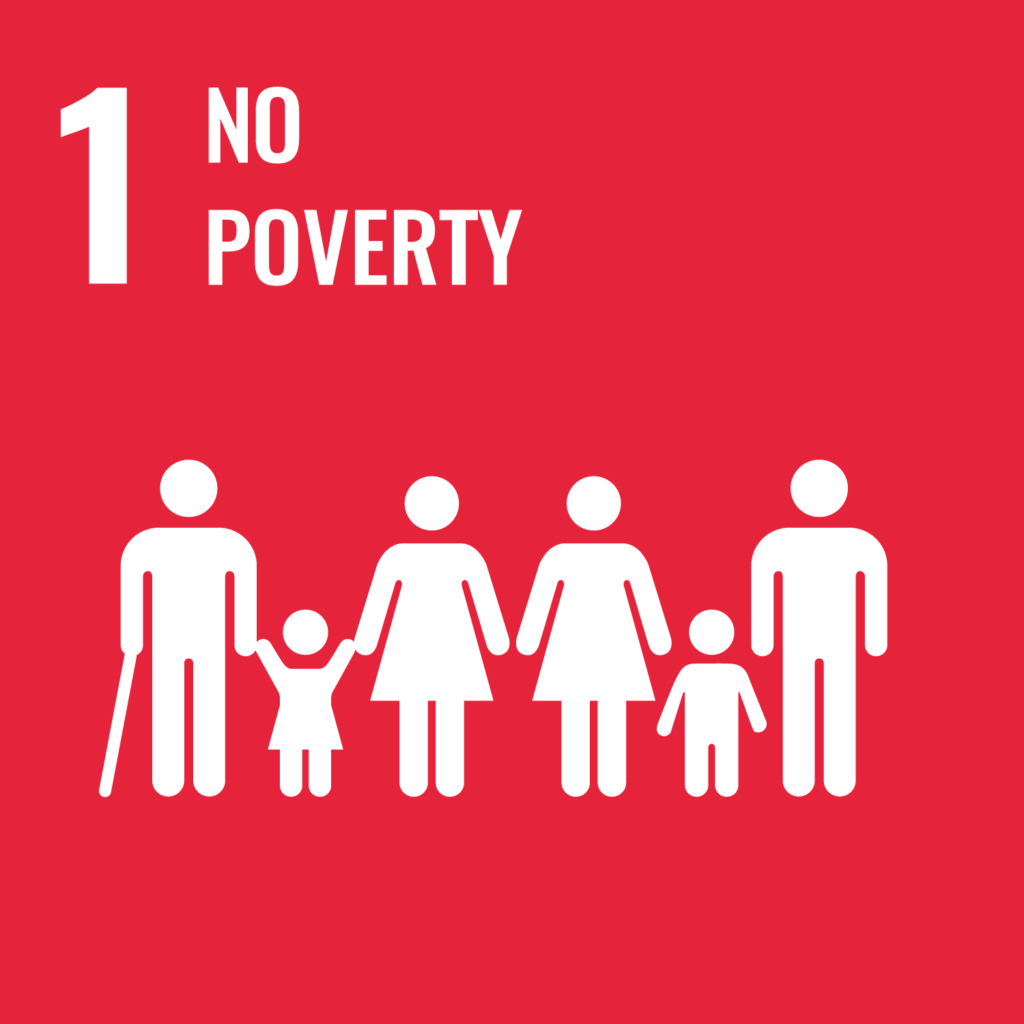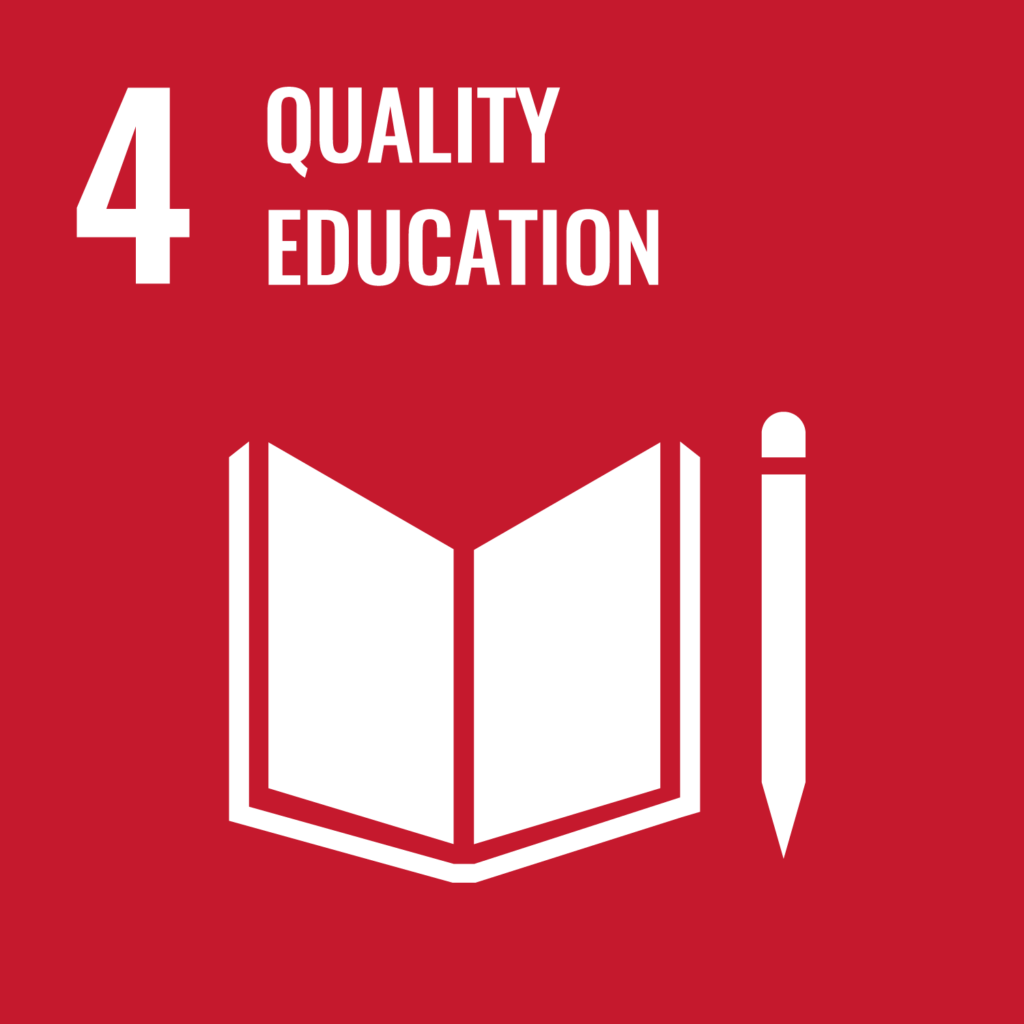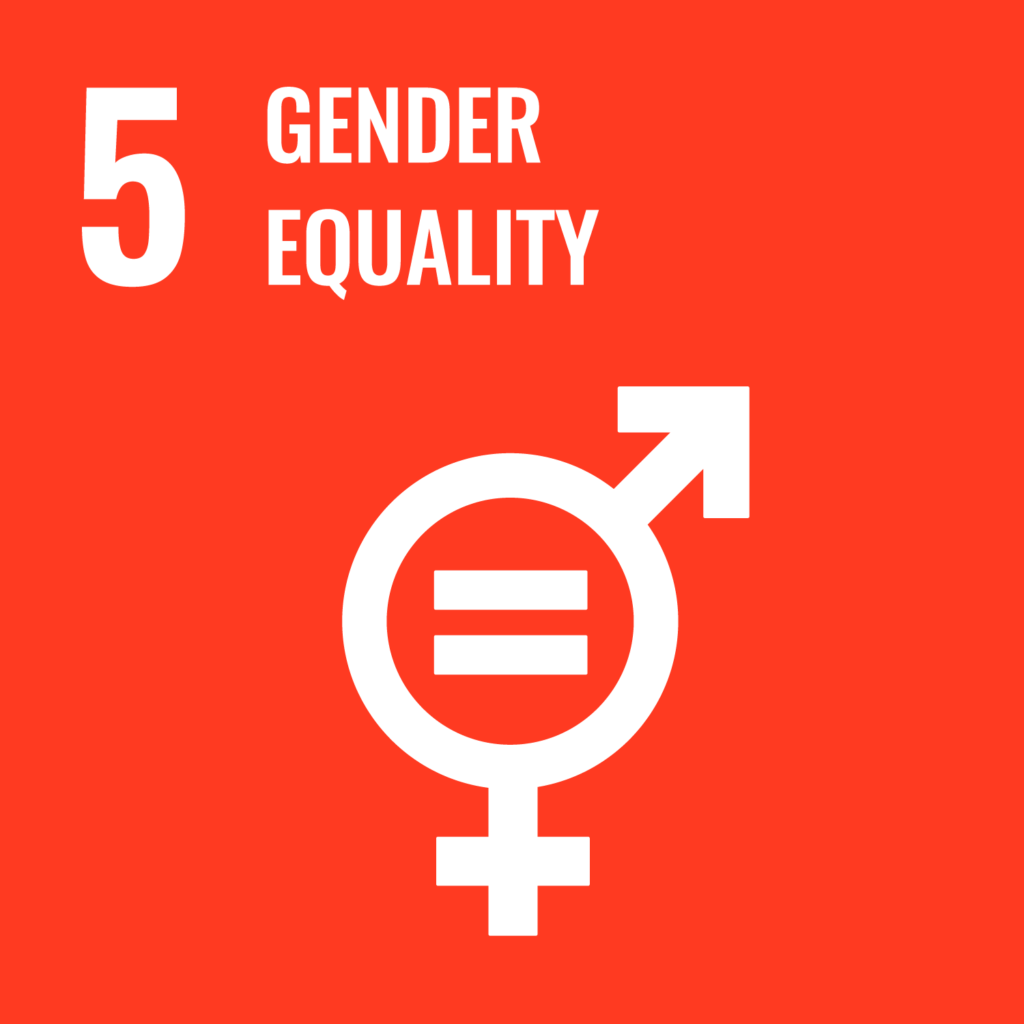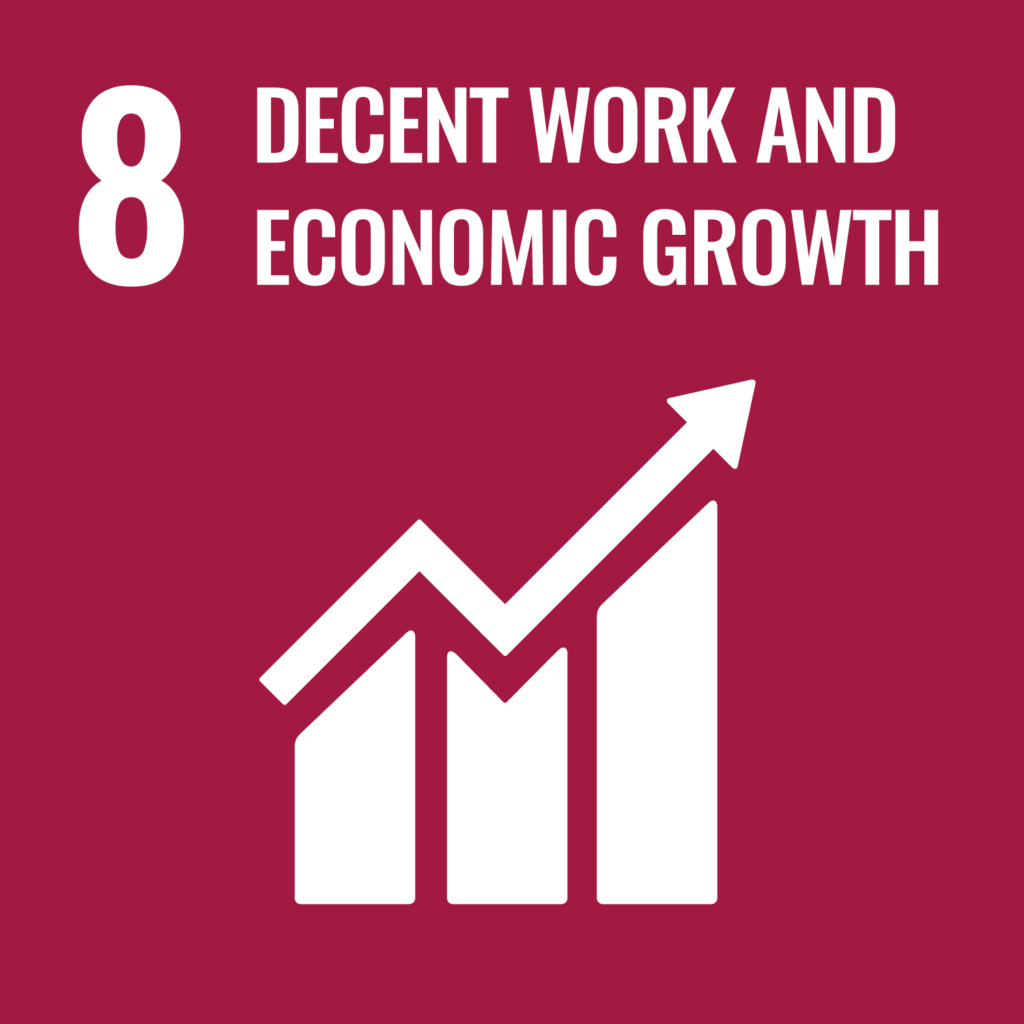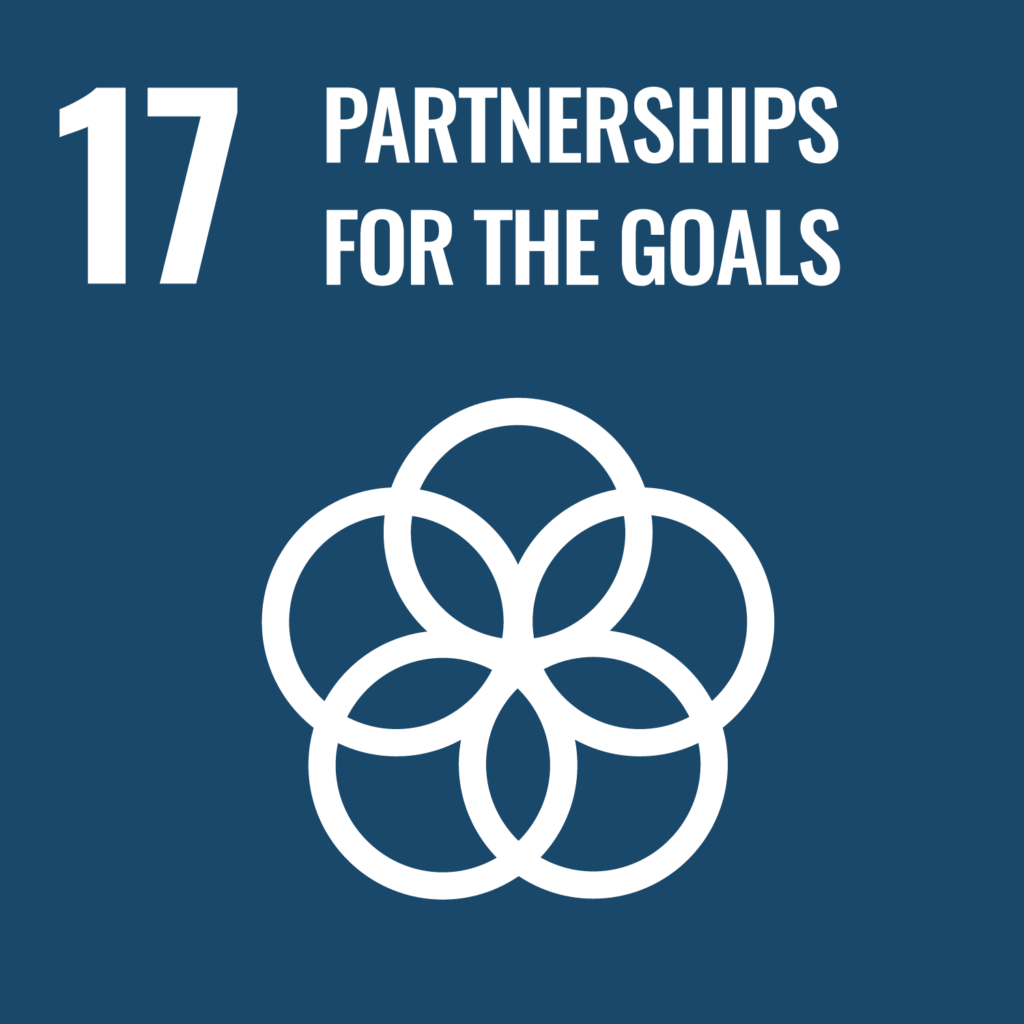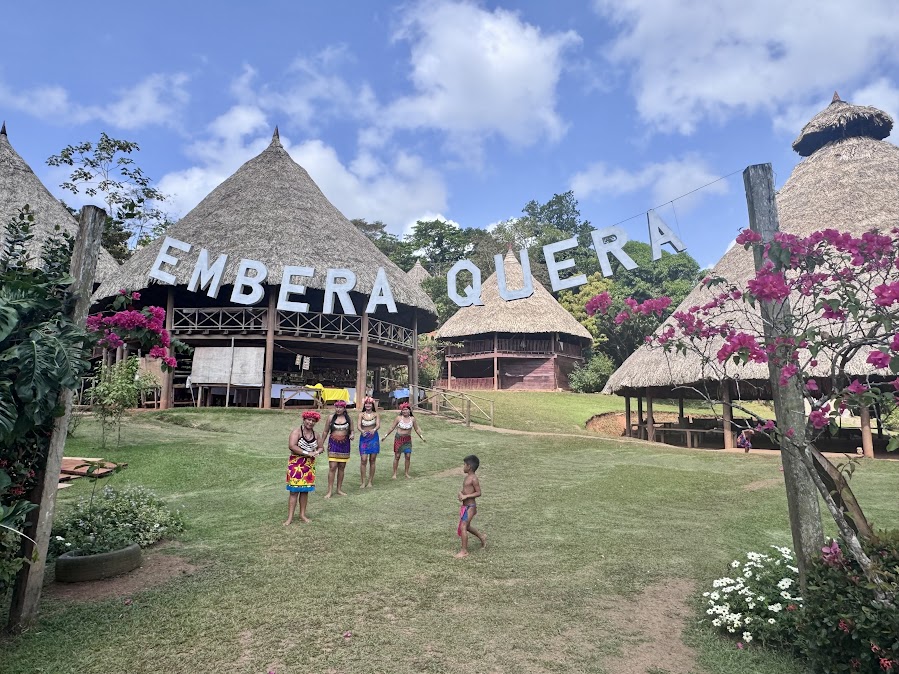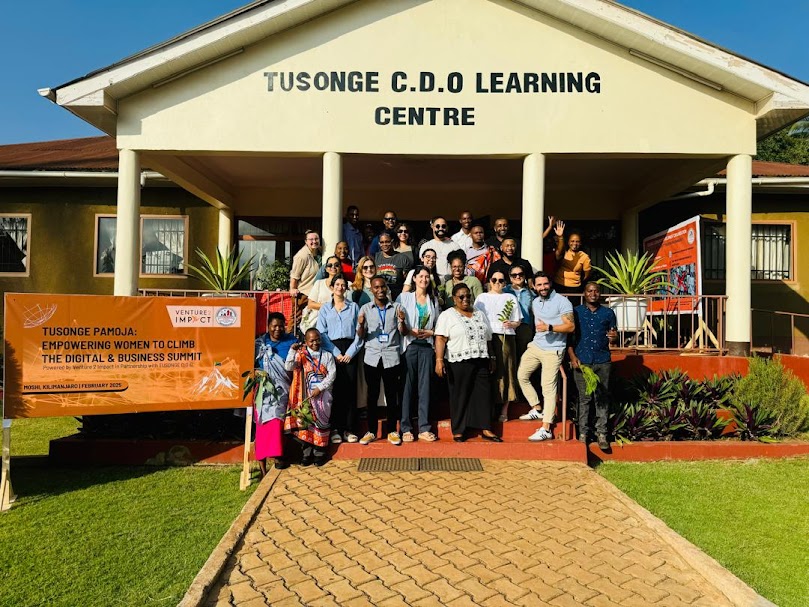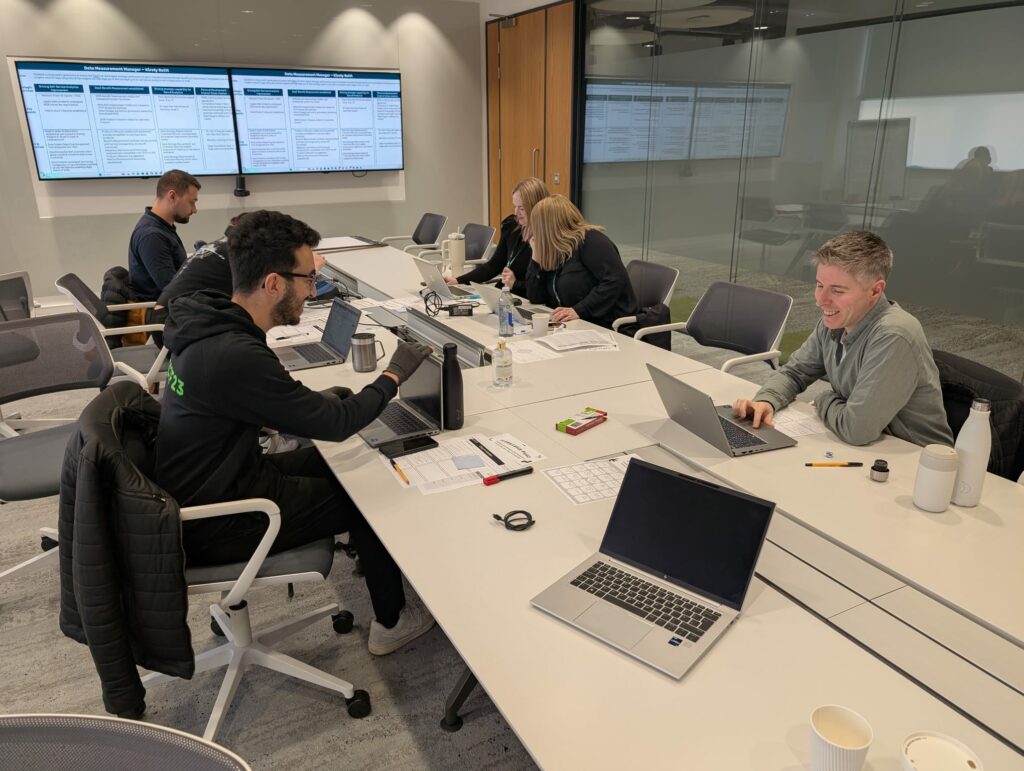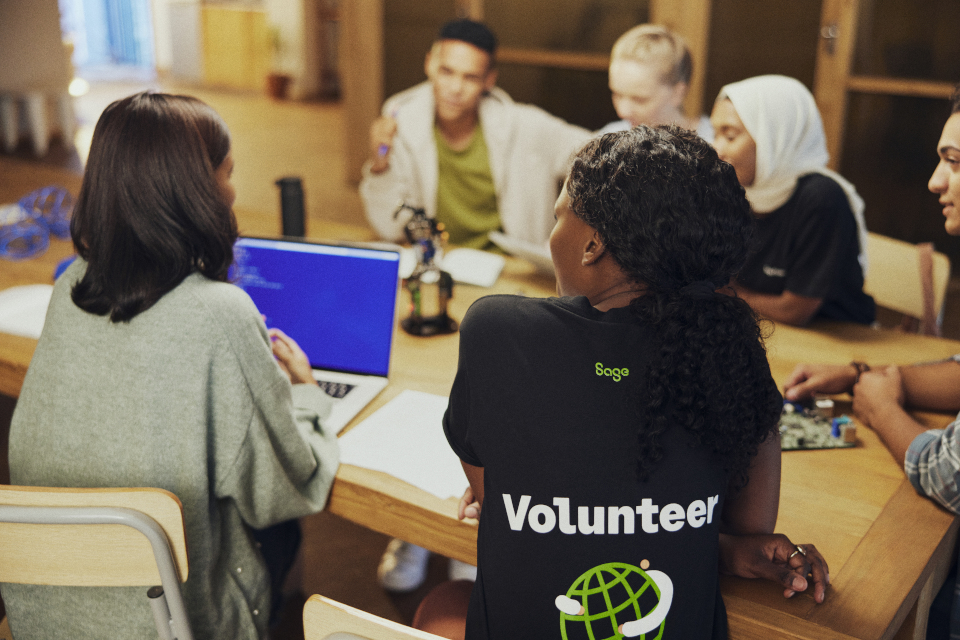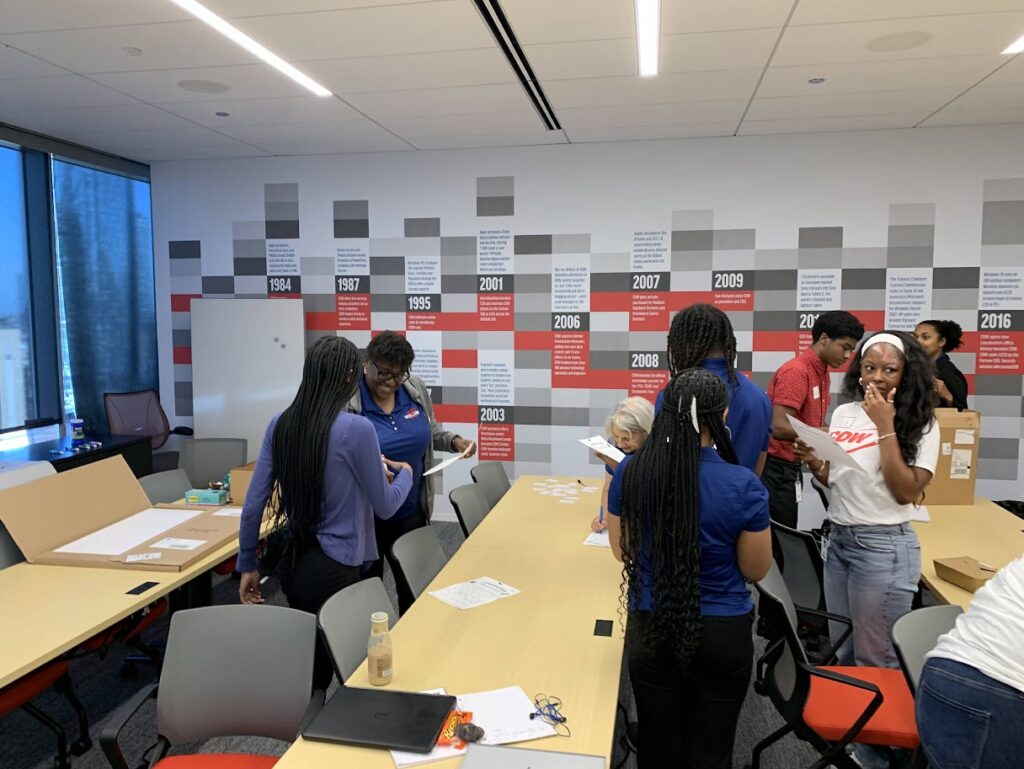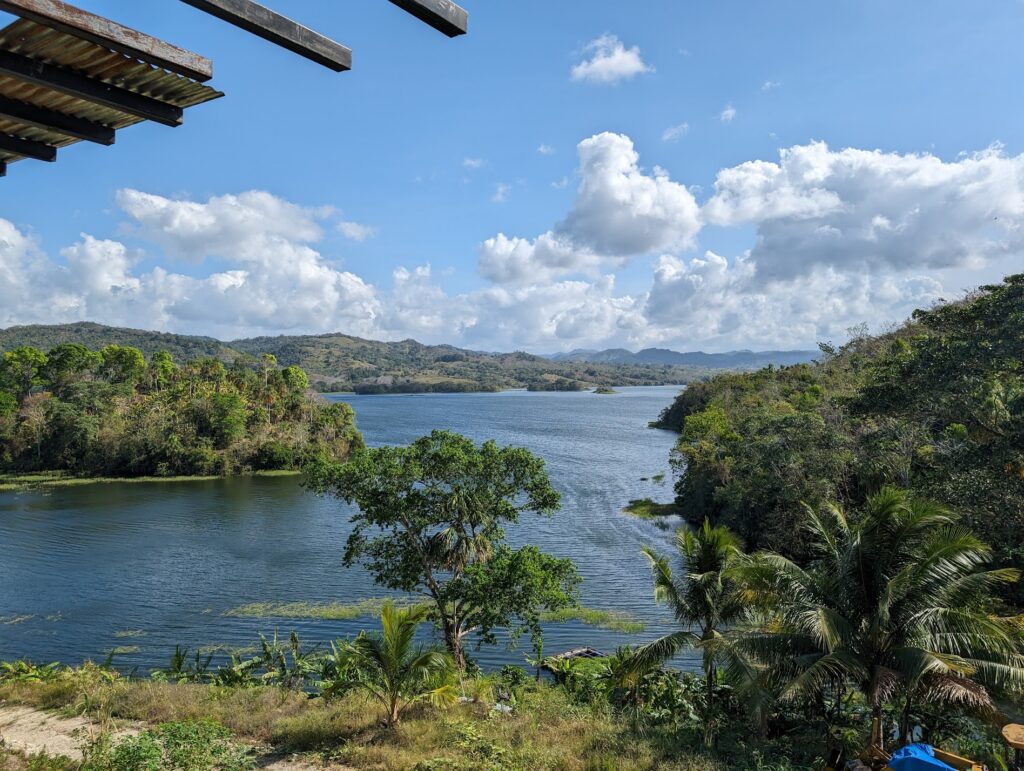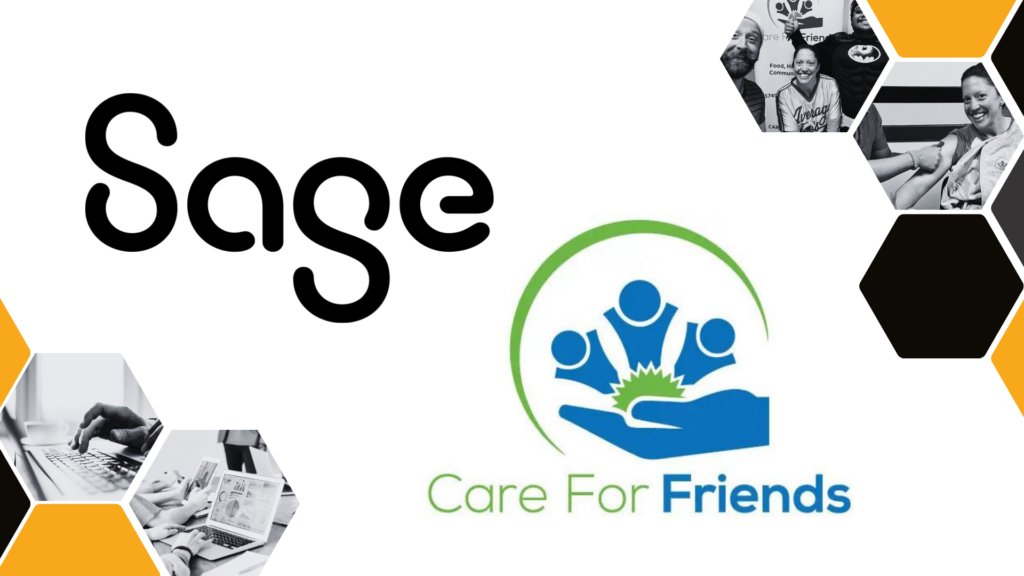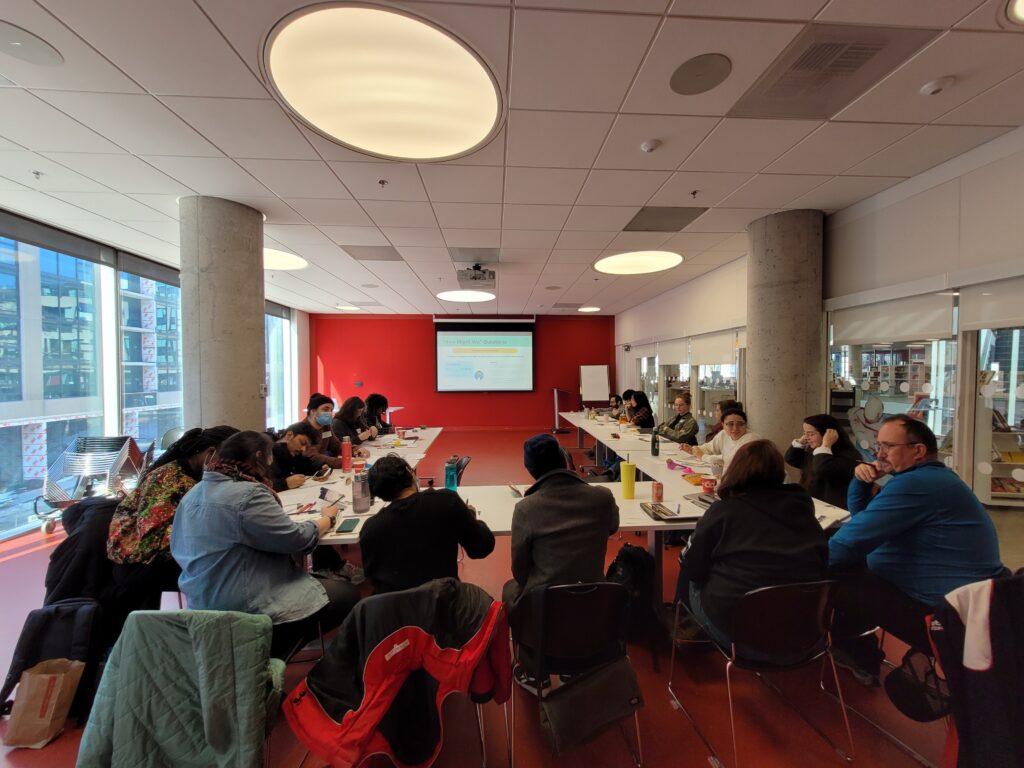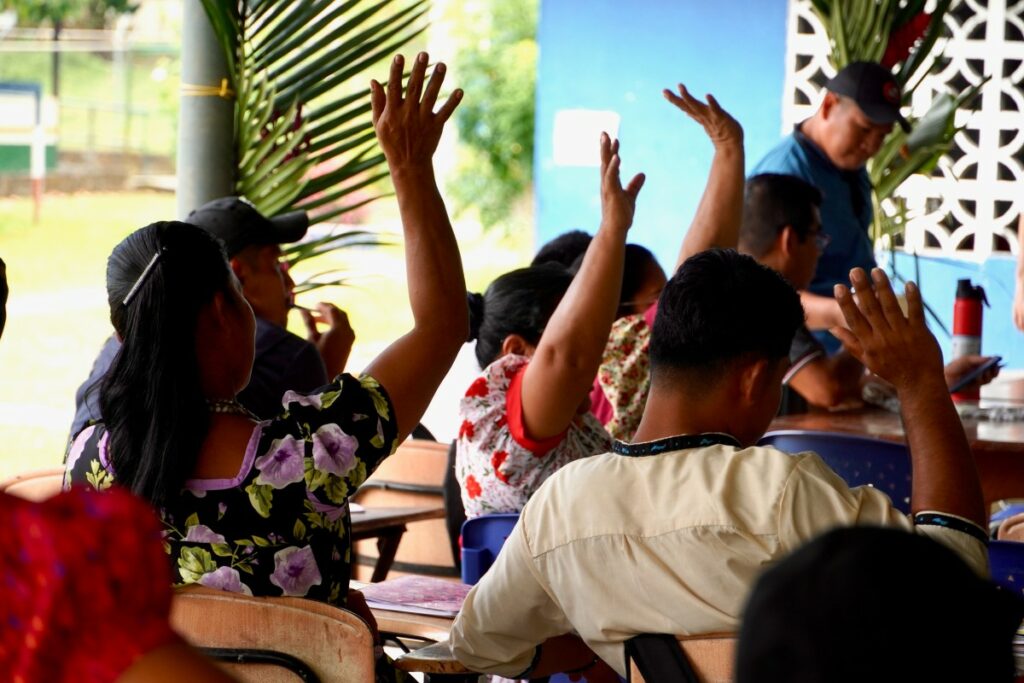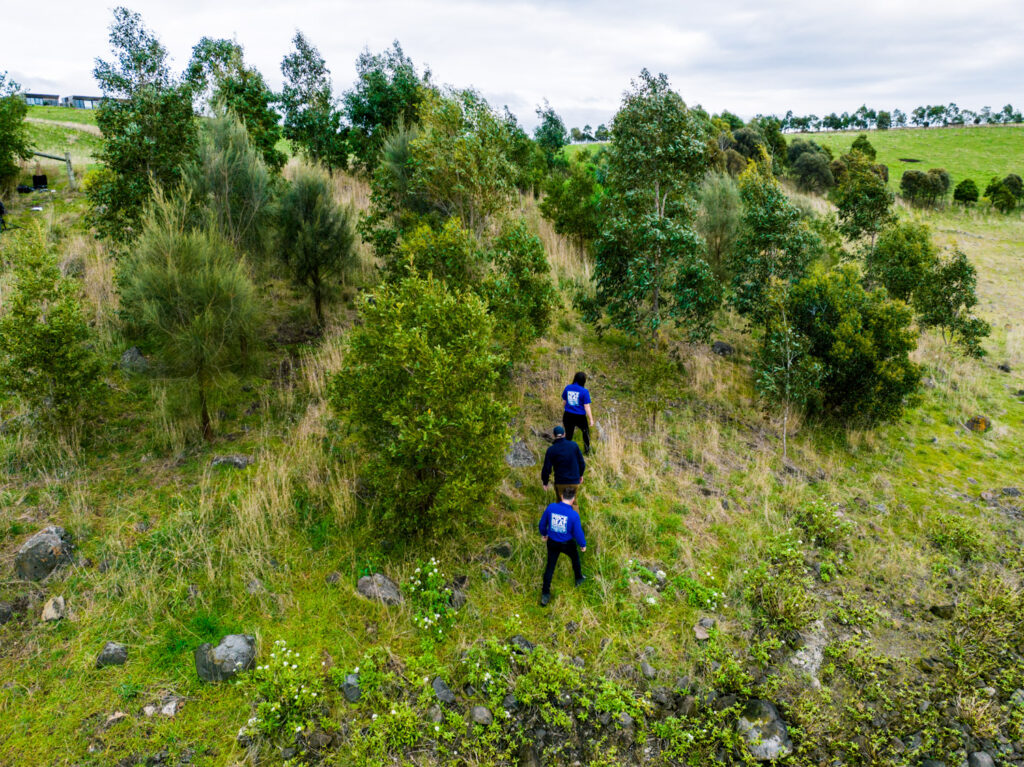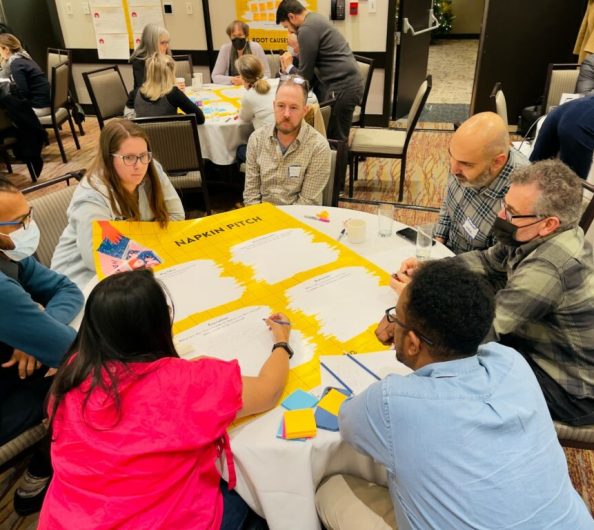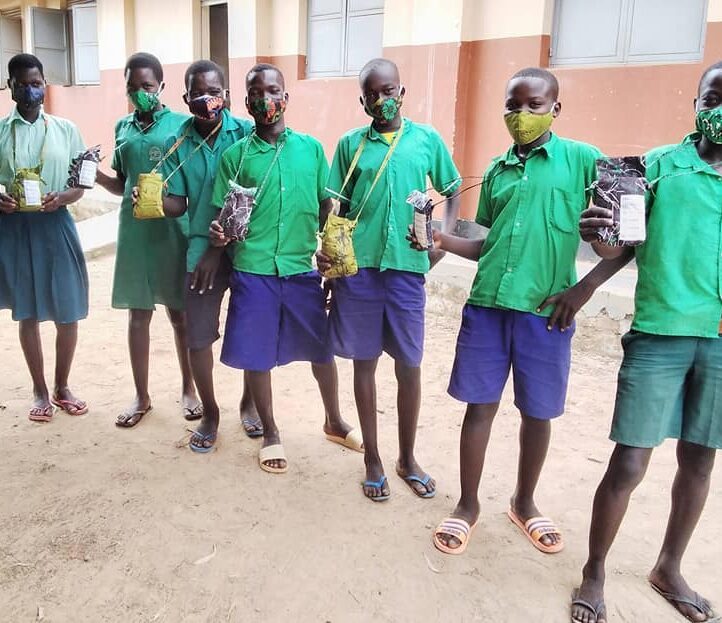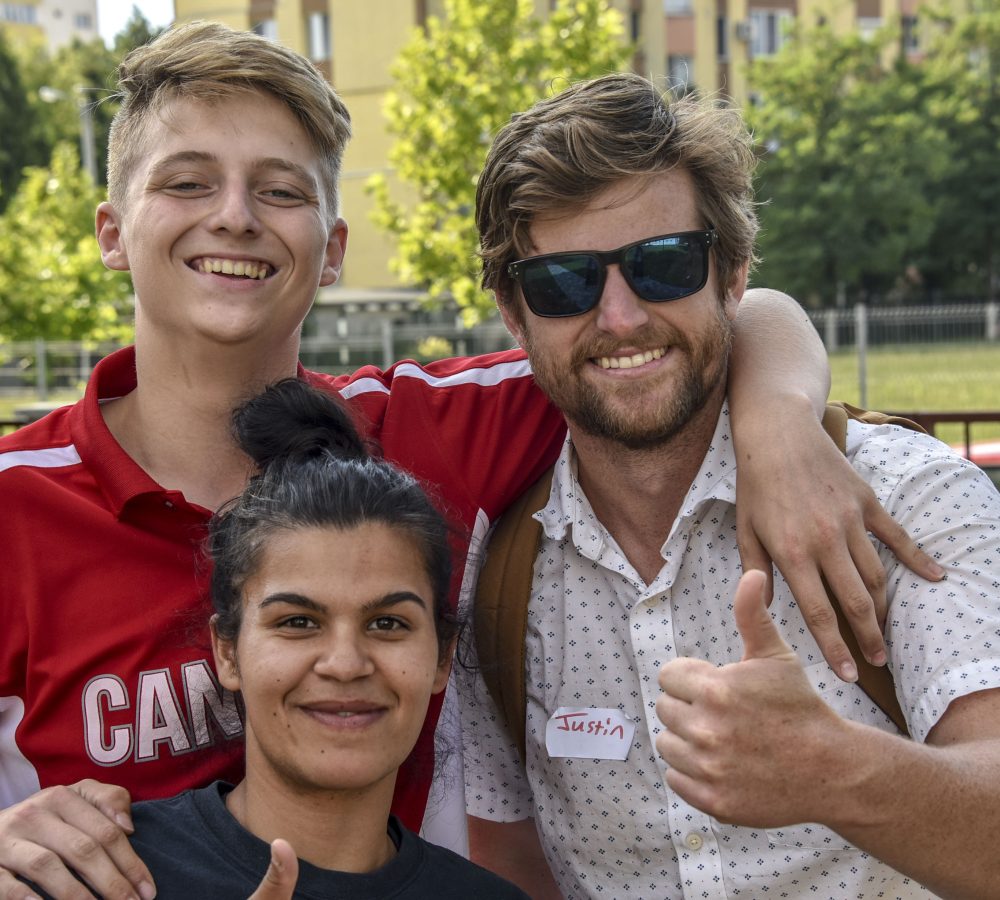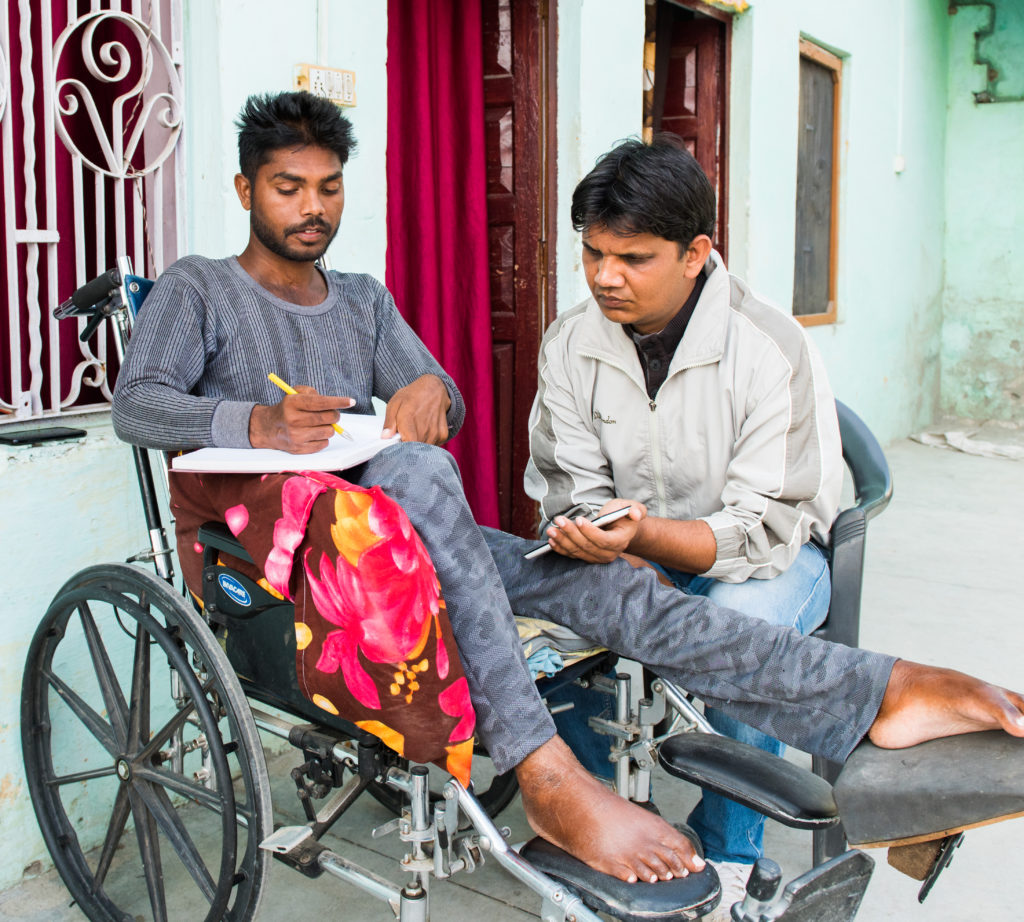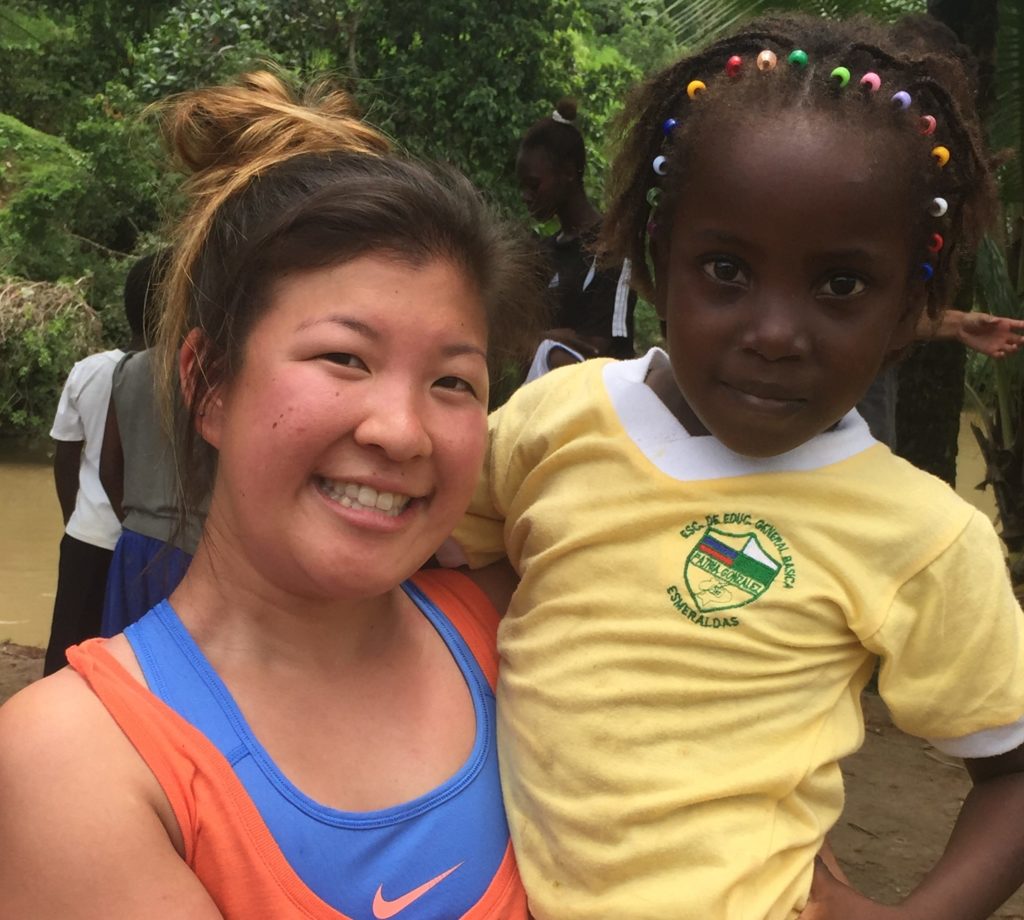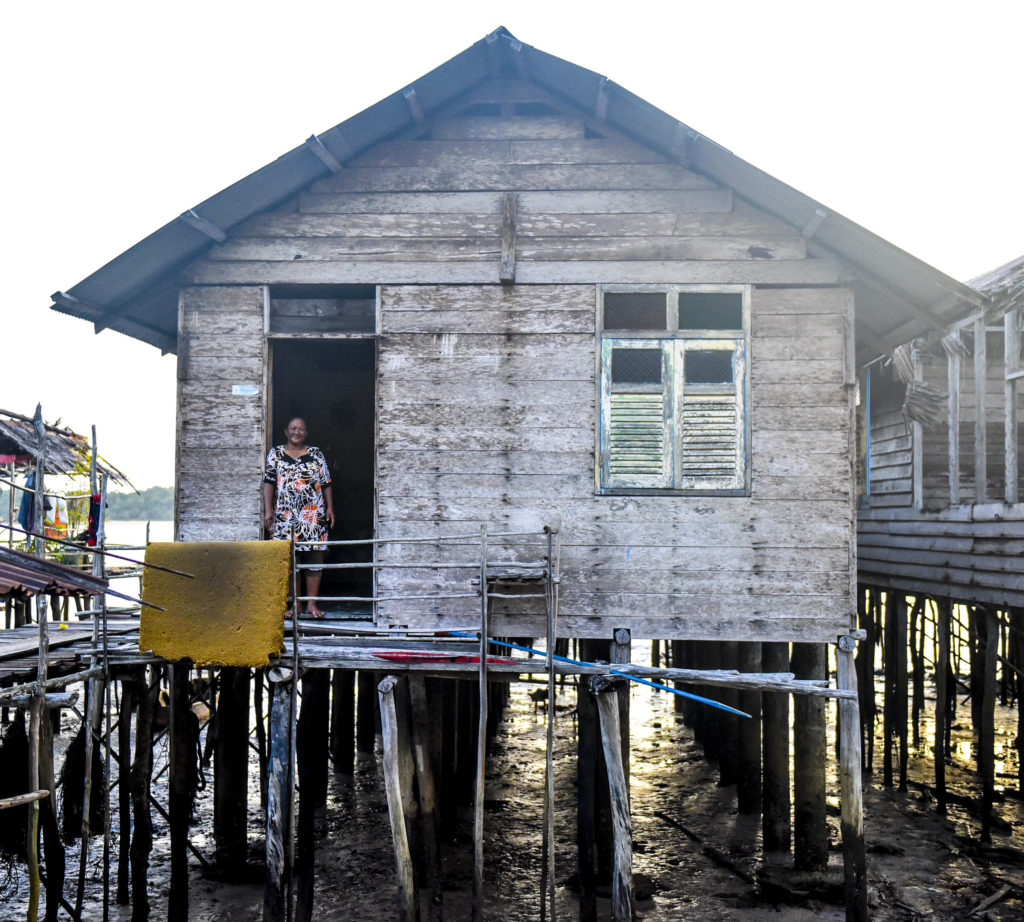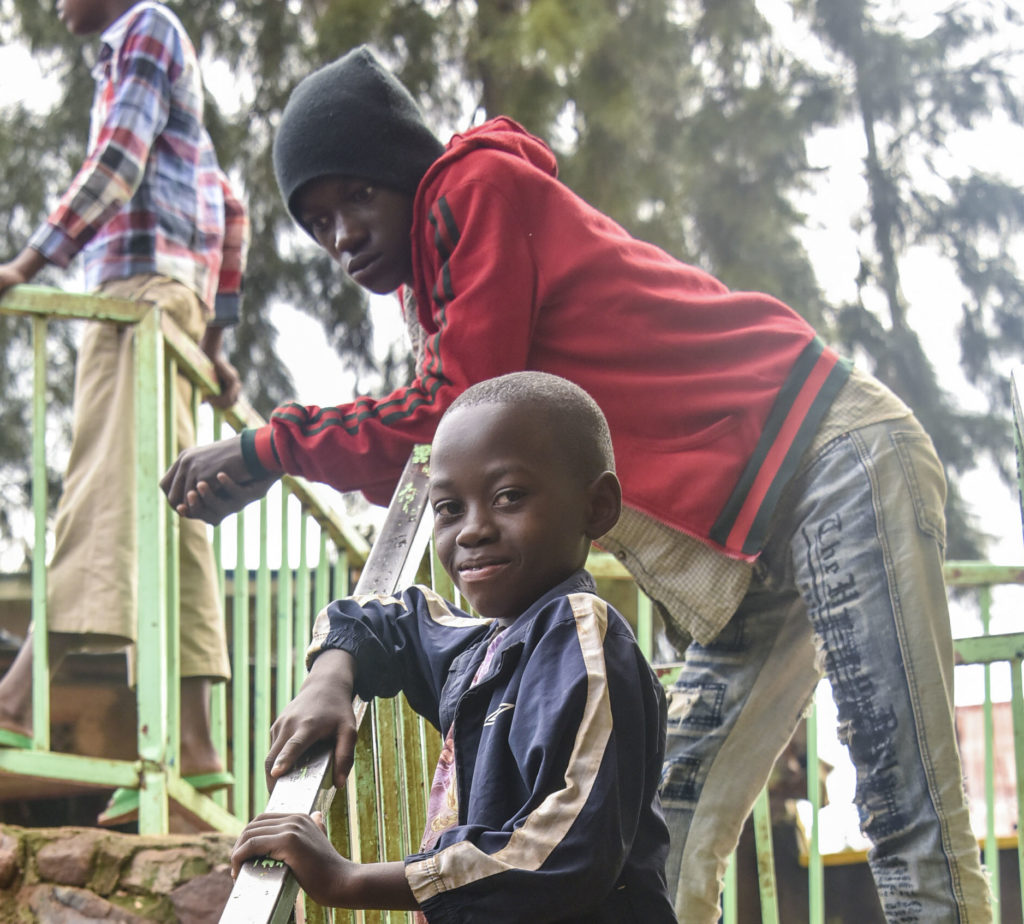How and why we work
What is a Theory of Change?
A Theory of Change (ToC) is a detailed representation of how an organization aims to create change. It lays out the specific cause and effect relationships between the organization’s initial output activities, immediate and intermediate outcomes, and the larger change they are working towards.
Having a ToC is an invaluable tool for ensuring that all of an organization’s activities stay aligned with their mission and contribute to creating the desired and lasting change. It is also very helpful for explaining to donors, participants, and all other interested parties how exactly the organization is working to create change.
ToCs can also be used on the programmatic level, in addition to the organizational level, to lay out the steps to impact for a specific project or program. At V2I, we have been developing project-specific ToCs for some time.
Now, having a clearly defined, overarching ToC will help guide all of our work, including the development of project-specific ToCs, and ensure that we continue to stay aligned with our goals from start to finish, today and into the future.
Pathways to Change
Connect & Partner: Connect local participants and volunteers from across the world and partner with NGOs and corporate leaders to co-create opportunities for human connection and co-learning.
Learn & Train: Learn about the issue(s) and context with local leaders and provide training that harnesses collective intelligence.
Build & Test: Build tech and business programming or products with local partners, leveraging corporate and volunteer resources, and test tools and processes to practice digital resilience.
Unlocking purpose, potential, and impact
Our approach
Venture 2 Impact uses human centered design and design thinking to solve complex challenges by linking global communities to skilled volunteers. We leverage untapped skills to create lasting impact. Through education, economic development, and empowerment projects, we work to equip NGOs, participants, and volunteers with skills, resources, and knowledge to advance gender equity, education, economic opportunity, and well-being.
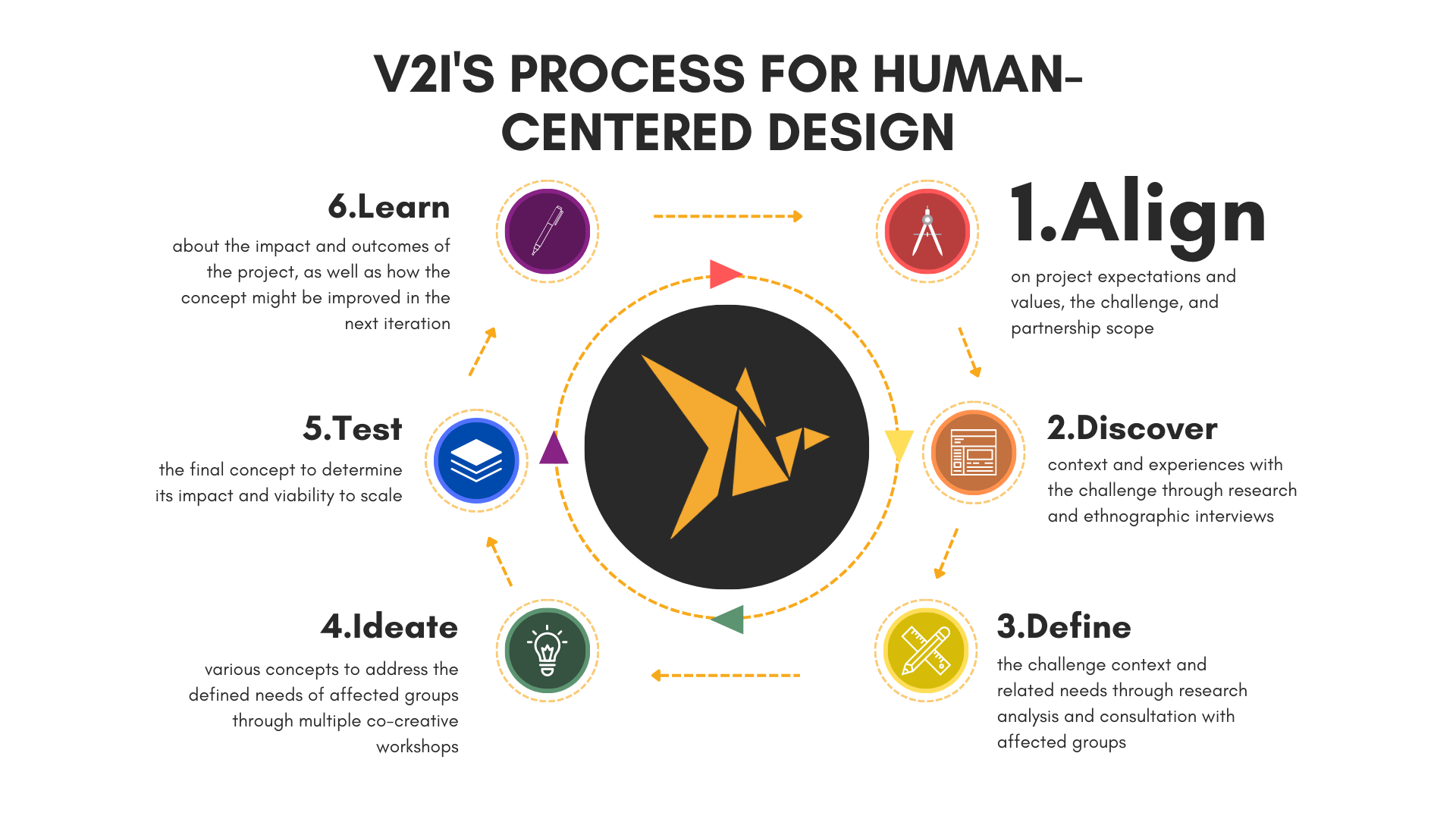
Our Approach to Human Centered Design (Accessible Text Version)
1. Align
- on project expectations and values, the challenge, and partnership scope
2. Discover
- context and experiences with the challenge through research and ethnographic interviews
3. Define
- the challenge context and related needs through research analysis and consultation with affected groups
4. Ideate
- various concepts to address the defined needs of affected groups through multiple co-creative workshops
5. Test
- the final concept to determine its impact and viability to scale
6. Learn
- about the impact and outcomes of the project, as well as how the concept might be improved in the next iteration
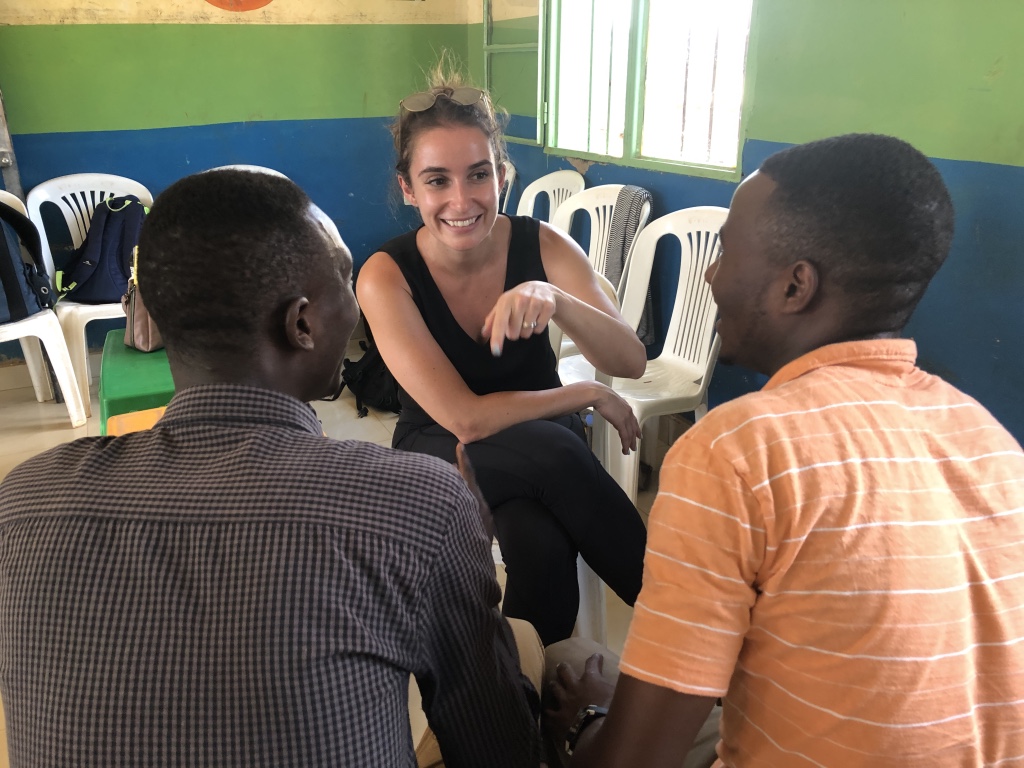
Our Impact
CREATING LASTING RESULTS
Our Progress Towards Impact
We’re linking global communities to create lasting impact
We have specified five Sustainable Development Goals to focus our efforts and project outcomes on. Check out how we’re examining and enhancing progress toward the goals:
our goal
Increase support in project communities for women and girls’ economic participation, empowerment, and decision-making
how?
Engage women and girls in the design and delivery of our projects, develop projects specifically targeted at women and girls, and work with local women’s rights groups.
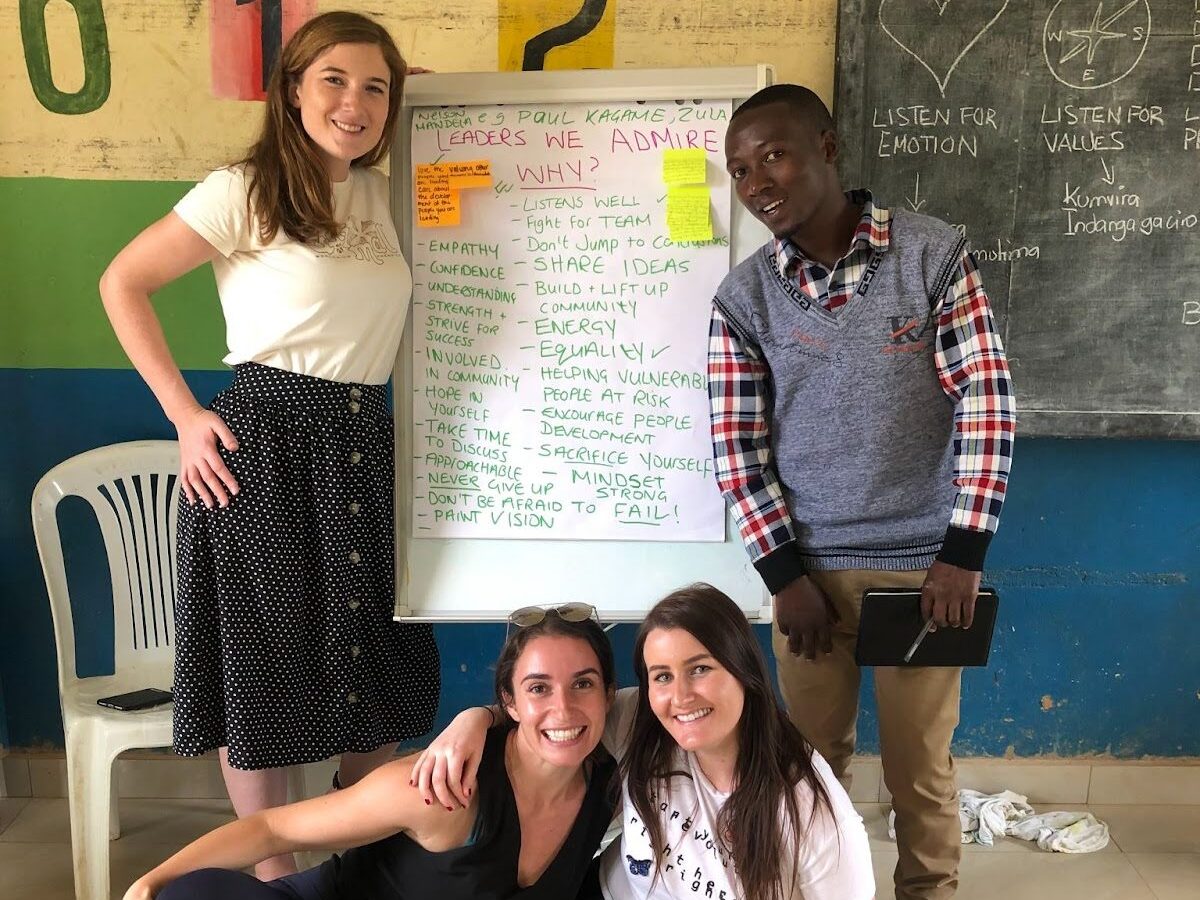
CASE STUDIES
PANAMA 2025 CASE STUDY
Supporting Indigenous entrepreneurs, particularly women, to build essential business skills through targeted workshops, mentoring, and peer learning.
TANZANIA 2025 CASE STUDY
Supporting entrepreneurs in Kilimanjaro through workshops and mentoring in finance, digital tools, communications, and leadership.
DESIGN SPRINT CASE STUDY
Supporting Newcastle United Foundation and Young Enterprise to tackle operational challenges effectively.
SAGE FOUNDATION GROW CASE STUDY
Supporting Sage Foundation Grow (SFG) with their program’s long-term sustainability.
CDW CASE STUDY
Supporting Per Scholas Chicago with ideas for a Social Media Development Plan
PANAMA 2024 CASE STUDY
Supporting Indigenous entrepreneurs in Panama City to overcome barriers through workshops in entrepreneurship and one-on-one mentorship
JORDAN 2024 CASE STUDY
Supporting Community Development: Enhancing Ruwwad's programs through human-centered design and volunteer expertise
CARE FOR FRIENDS CASE STUDY
Strategic growth: Enhancing Marketing and Engagement for Care For Friends
DESIGN THINKING BOOTCAMP CASE STUDY
Transforming nonprofit strategies through design thinking and human-centered design
CAREERVILLAGE CASE STUDY
Developing the branding strategy for CareerVillage's AI product launch
2024 PER SCHOLAS CASE STUDY
Developing a sustainable fundraising strategy for Per Scholas Atlanta
ASPIRE CALGARY CASE STUDY
Innovative data collection solutions for poverty alleviation programs
FSC-IF CASE STUDY
Supporting the digital transformation of administrative processes at the FSC-IF Indigenous Foundation
GREENING AUSTRALIA CASE STUDY
Enhancing risk management to support Greening Australia in reaching their ambitious environmental sustainability goals
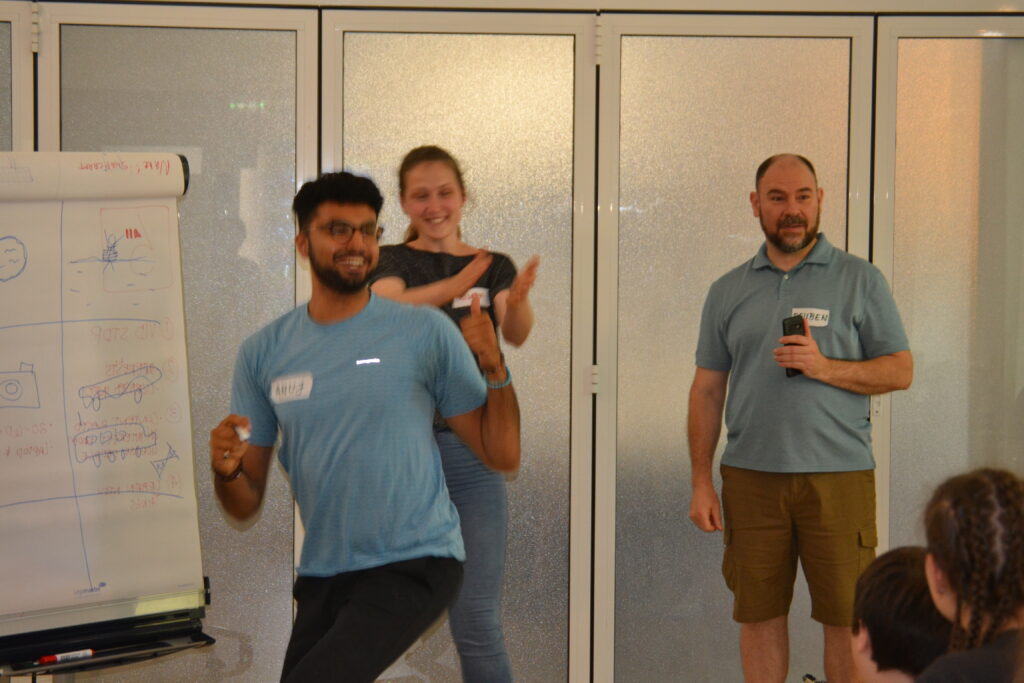
ROMANIA 2023
Enhancing job prospects and self-esteem for children and young adults in Romanian state care
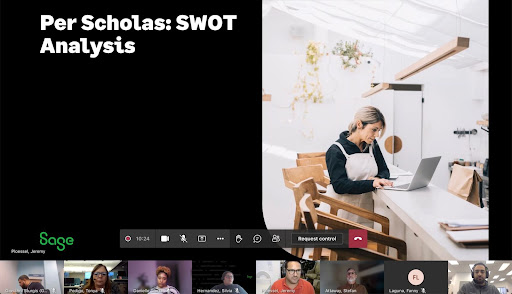
DEVELOPED AN IMPROVED NEW LEARNER RECRUITMENT STRATEGY
Increasing new learner recruitment by leveraging Sage alumni and Atlanta Community Based Organizations
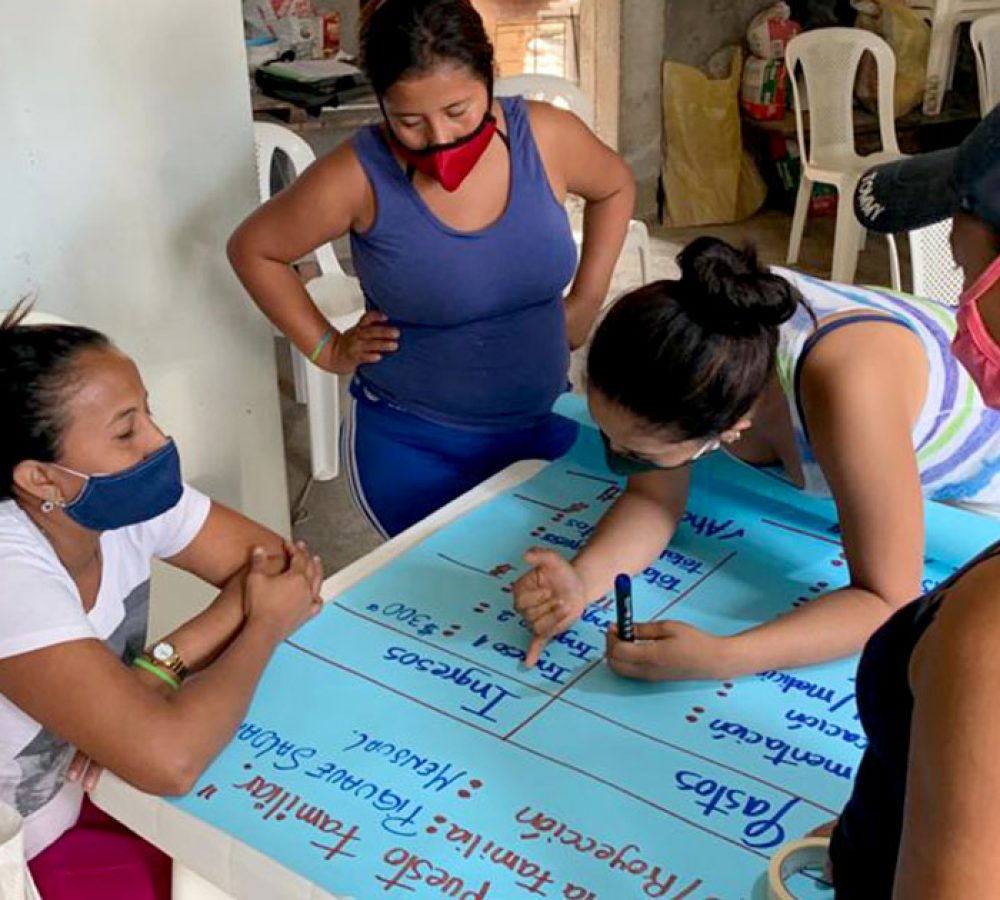
COORDINATED AND CENTRALIZED WEB PRESENCE DEVELOPED
Coordinating a centralized web presence to support global alignment for youth employability programs
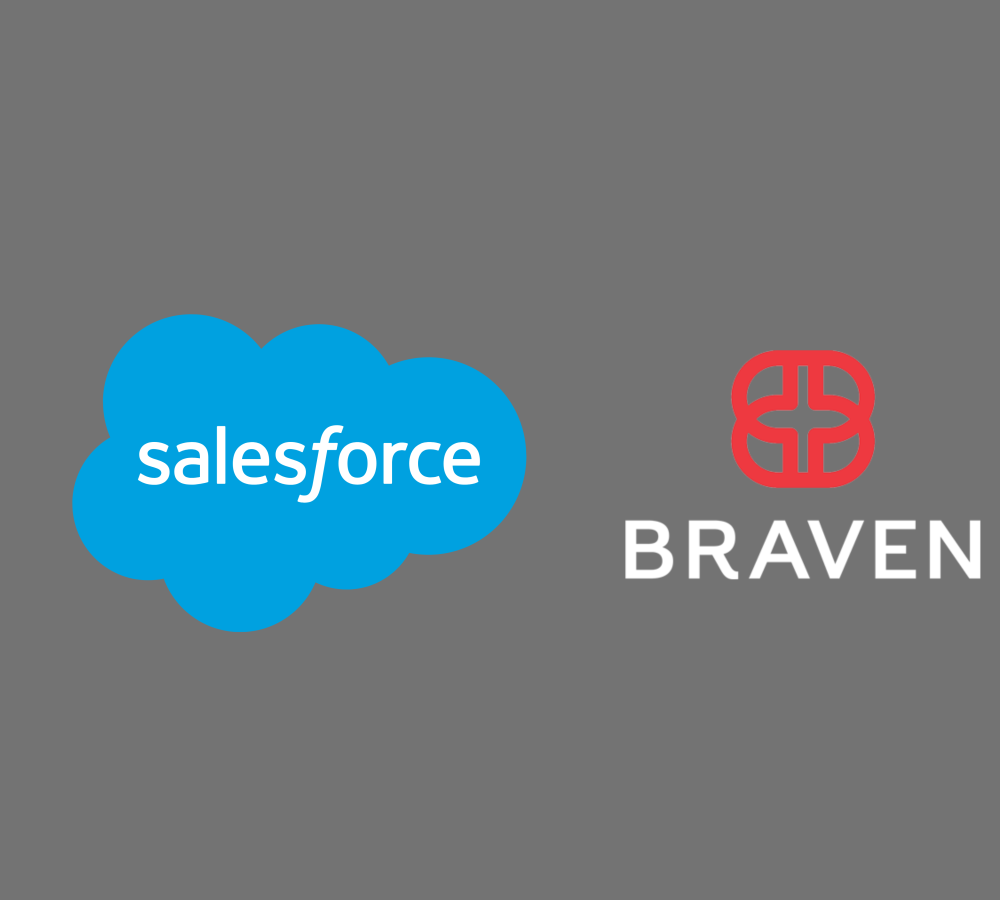
40,000 STUDENTS REACHED
Empowering promising, underrepresented young people with the skills, confidence, experiences, and networks necessary to transition from college to strong first jobs
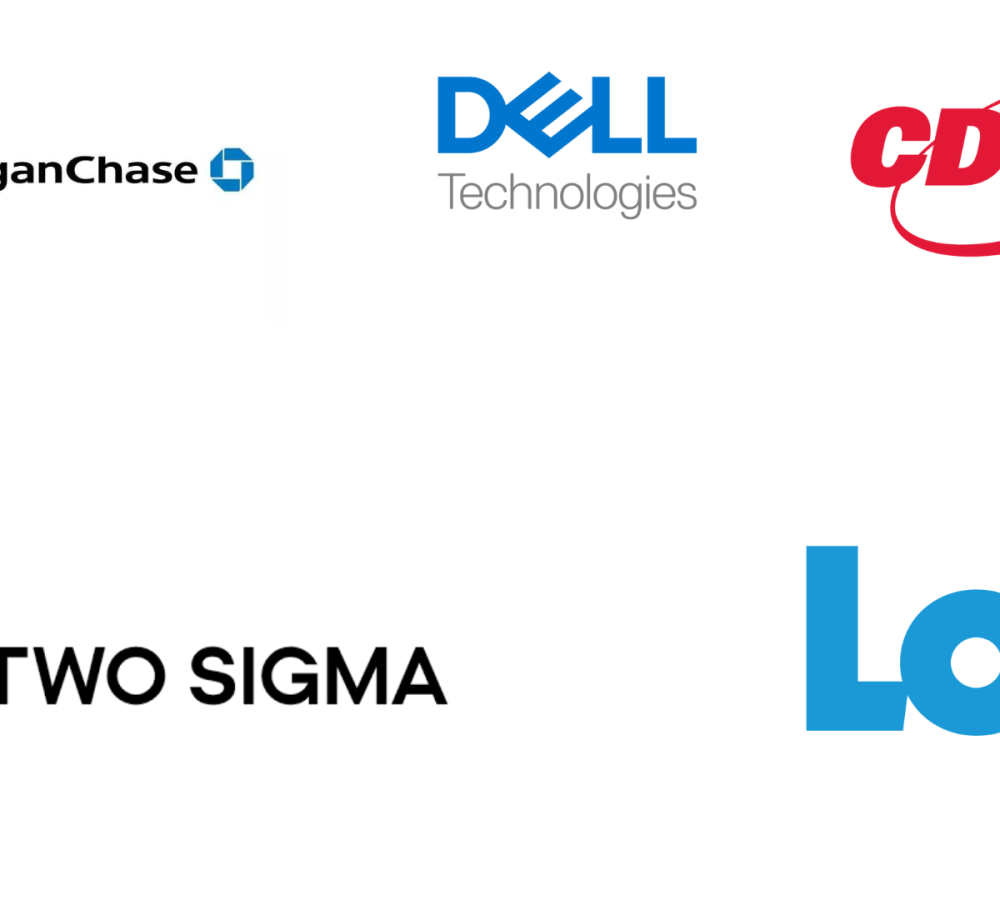
ACCELERATING EQUAL EMPLOYMENT OPPORTUNITY THROUGH AUTOMATION AND INTEGRATION
A network of Tech and Data for Good practitioners that are using their technology and data resources and skills to address issues in the communities where we live and work
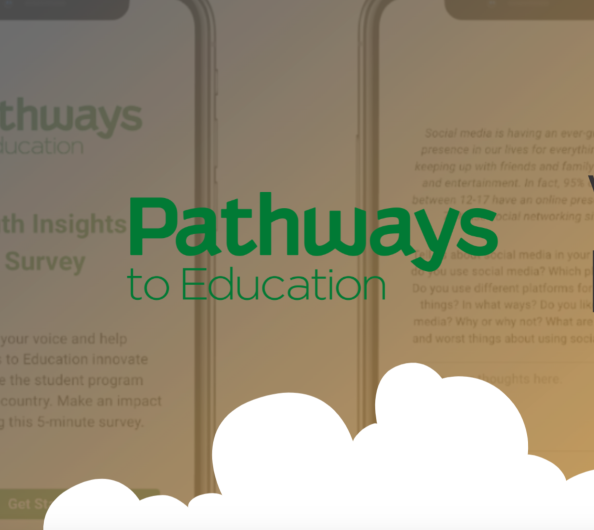
REIMAGINING THE PROCESS FOR COLLECTING AND IMPLEMENTING STUDENT INSIGHTS
Re-imagining the way product insights are consistently collected, reflecting an intimate and deep understanding of the day-to-day experiences of the youth
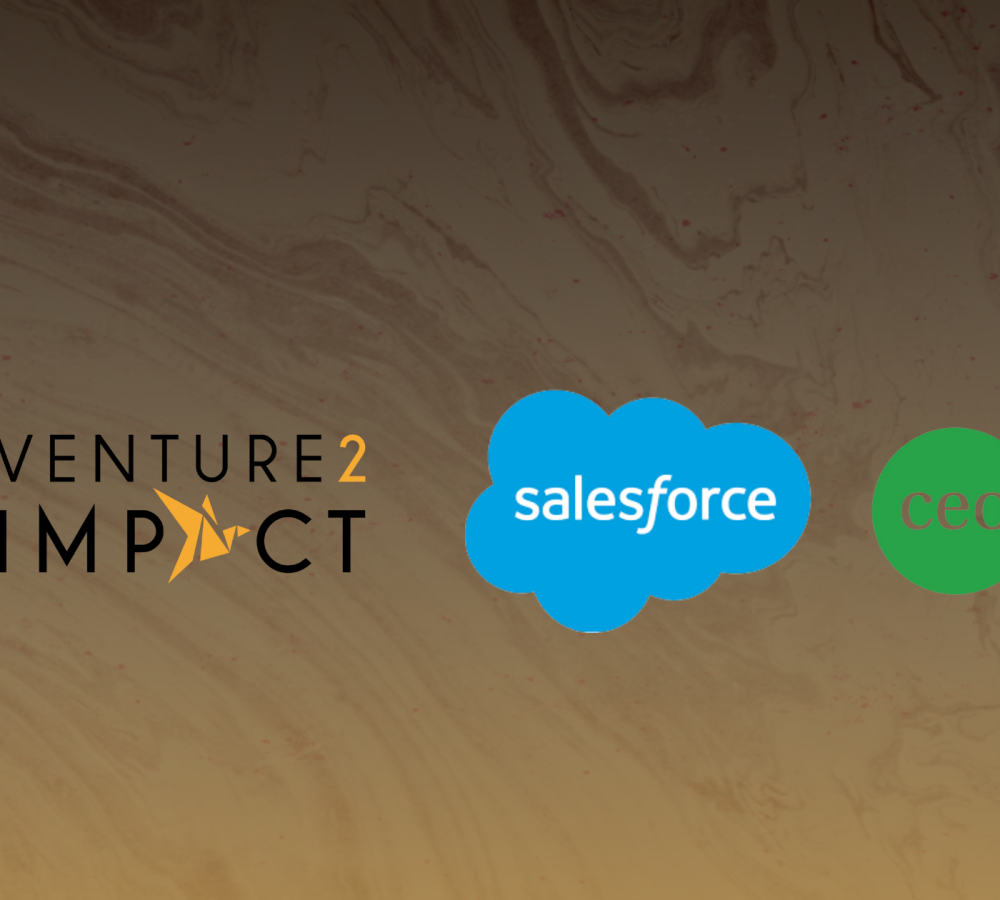
DIGITAL LITERACY TRAINING TO GIVE FORMER INMATES A SECOND CHANCE IN THE WORKFORCE
Creating a digital skills program for individuals, who have been recently released from prison, and offering them the support necessary to build career capital and financial stability
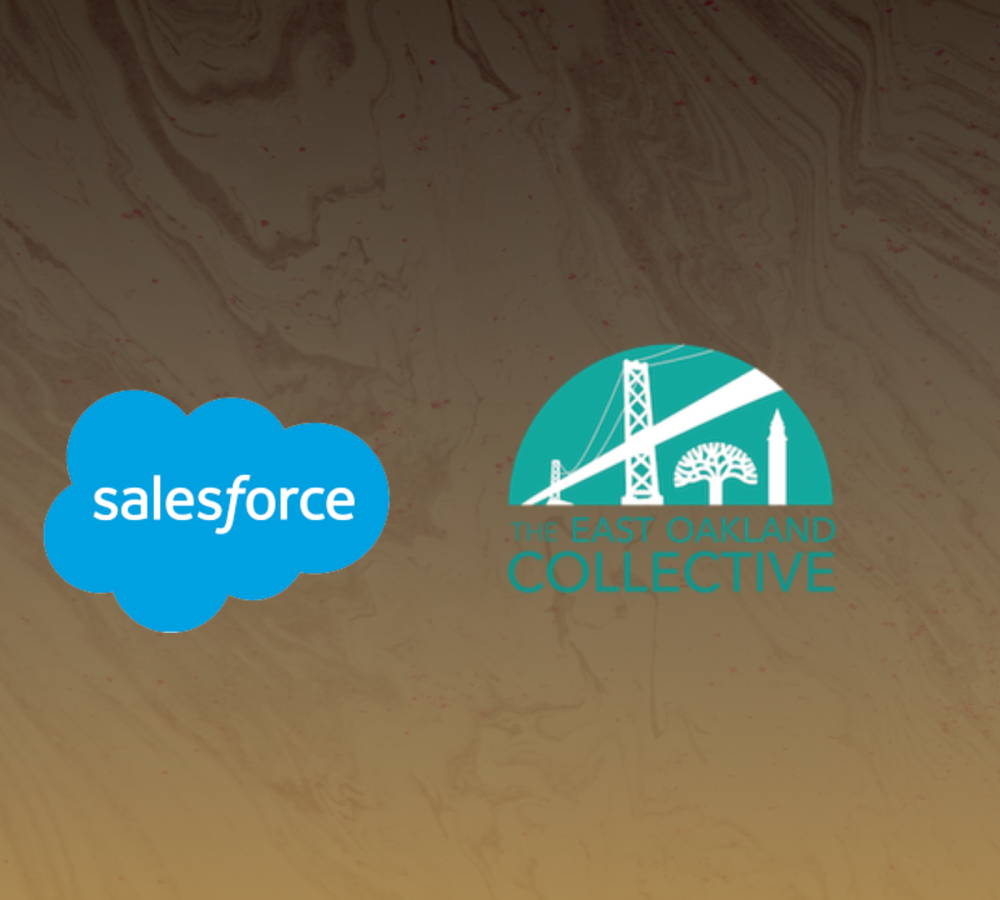
BUSINESS AND ENTREPRENEURSHIP TRAINING IN EAST OAKLAND
Improving racial and economic equality in East Oakland through business and entrepreneurship training and support
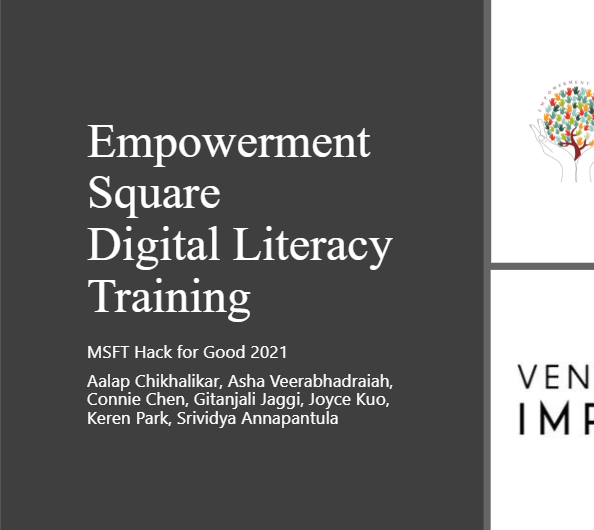
E-COMMERCE FOR SURVIVORS OF HUMAN TRAFFICKING
Providing female survivors of human trafficking with the training required to launch e-commerce platforms
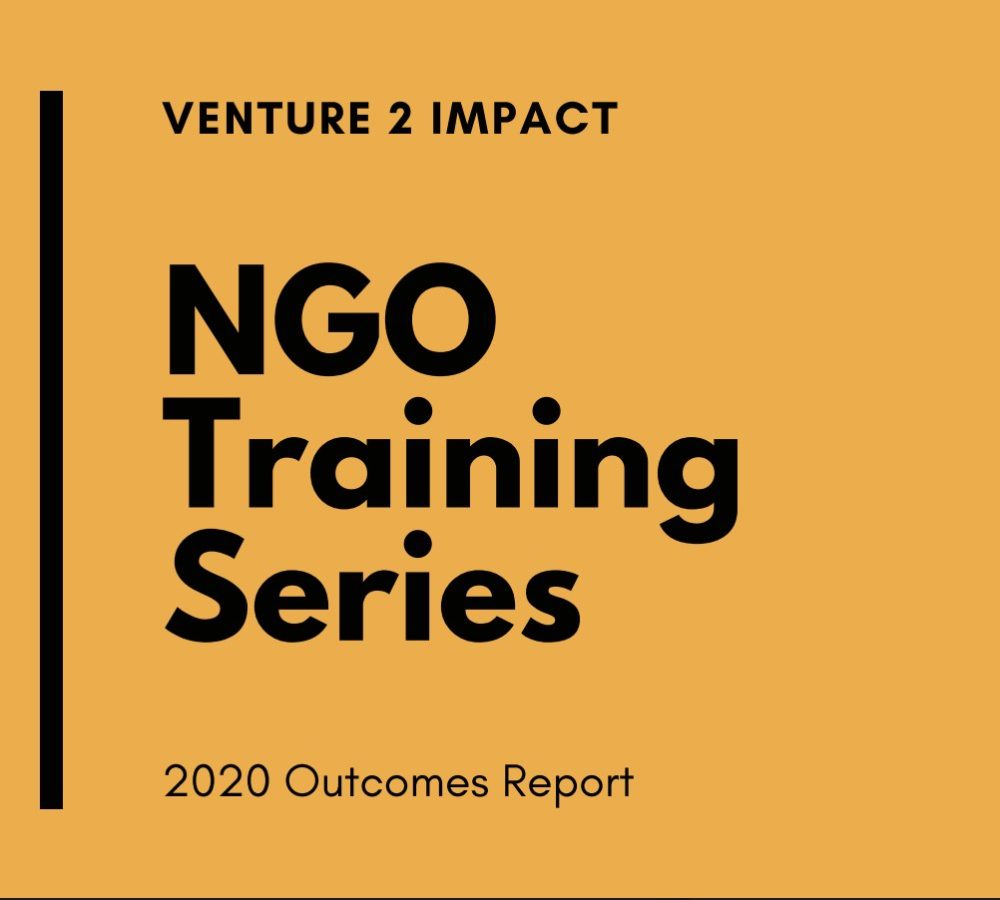
NGO TRAINING 2020
How our 2020 NGO training series benefited nonprofit organizations around the world
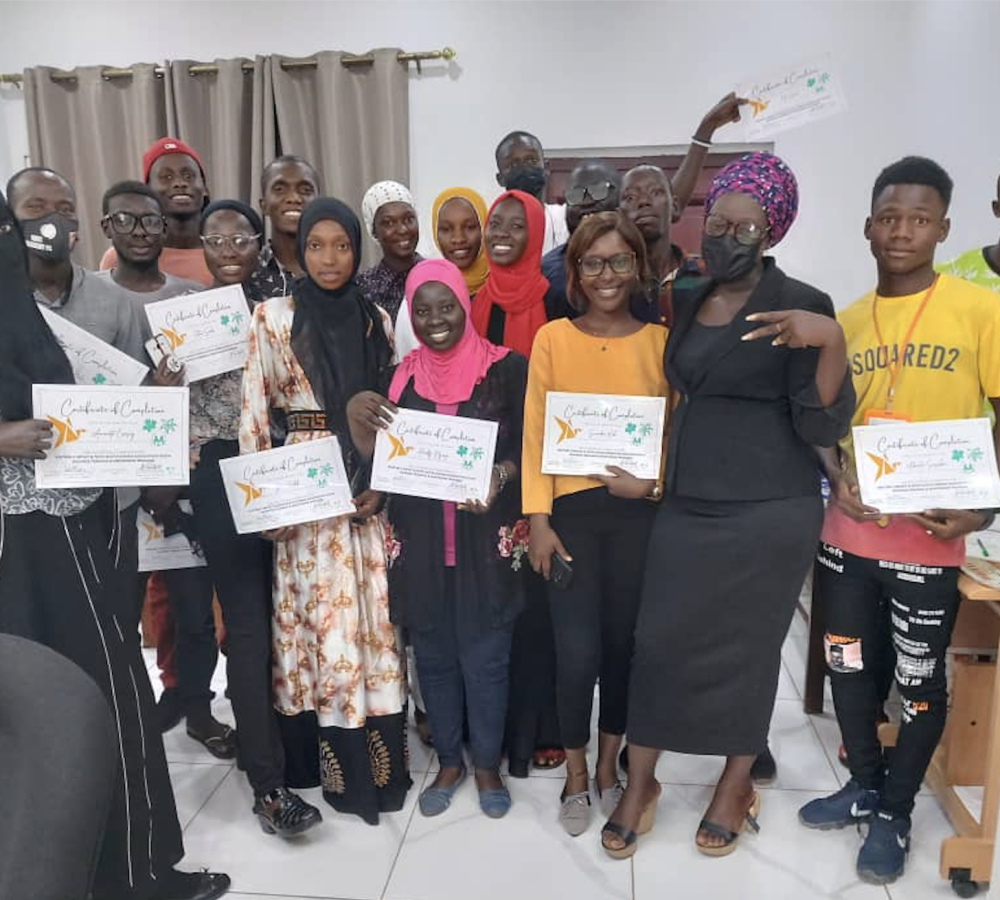
YOUTH MENTORSHIP IN THE GAMBIA
Training and mentoring Gambian youth to become entrepreneurs
Measuring Our Impact:
A Partnership Guide
We all want to make a difference, but how do we know if we’re making an impact? That’s the question that many of us looking to make a difference in the world are asking. Measuring our impact can be a tricky and complex task, but it is essential for understanding the real impact of our efforts.
In this blog post, we’ll explore how we at Venture 2 Impact measure our impact and how to use this information to create meaningful change.
What is Impact Measurement?
At V2I, impact measurement is an essential component of our work. It is a process in which we assess our projects’ positive and negative effects on society and the world to amplify the positive changes and reduce the negative ones.
This helps us stay on track toward our mission and vision while providing data and accountability to our stakeholders, funders, volunteers, and partners.
To ensure our impact is accurately measured, we create a detailed Monitoring, Evaluation, and Learning (MEL) plan for each project. This plan includes project-specific indicators that measure our projects’ social, economic, and environmental benefits and V2I indicators that help us stay aligned with our goals and progress equity.
The Process Of Impact Measurement
We measure the success of our projects and their impact on participants by using Monitoring, Evaluation, & Learning (MEL). Every project we implement has an associated MEL plan that outlines critical information such as:
- – Who the participants are.
- – What outcomes we expect.
- – The indicators we use to track progress.
- – The data-gathering tools at our disposal.
Our nonprofit partners are essential to the MEL process, providing data about their staff and participants that allow us to create comprehensive case studies. This information also benefits our partners, giving them a clear understanding of the project’s impact.
At the start of each project, we will have a MEL session to review the plan and incorporate any additional indicators our partners wish to track. We’ll also use this time to discuss roles and responsibilities for data collection.
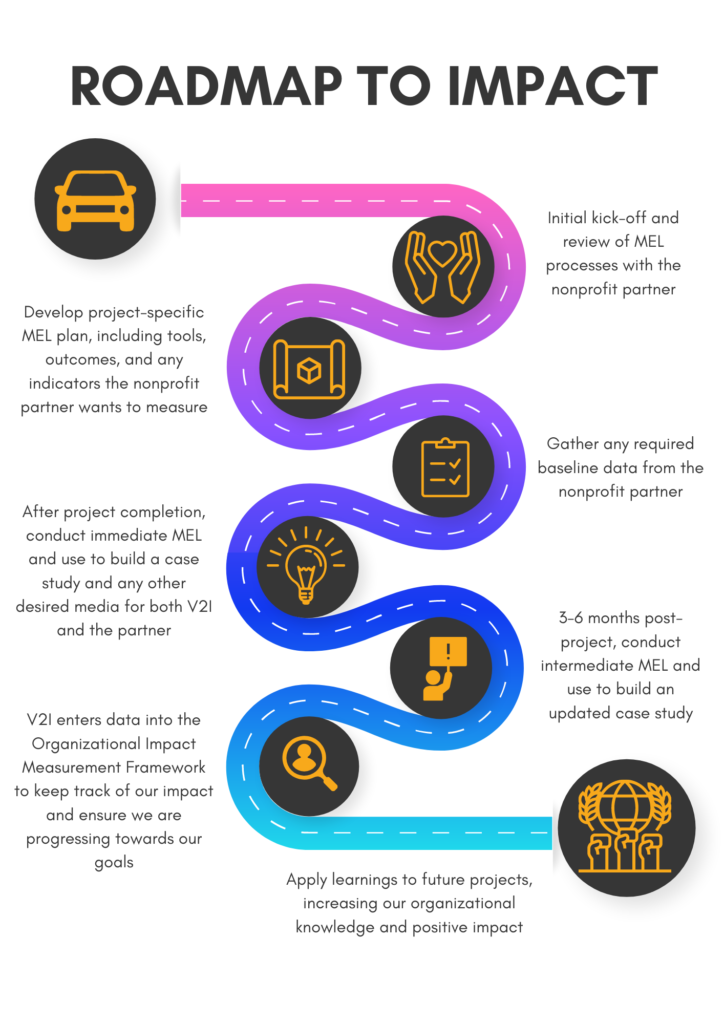
The Importance Of Measuring Our Impact
To effectively manage and measure our progress, it is essential that we measure our impact. Measuring our impact allows us to understand the impact of our initiatives, identify areas of success and areas for improvement, and develop strategies to maximize our efforts and resources.
Establishing partnerships can be an effective way to measure our impact, as partners can help to provide insights, resources, and perspectives that can help to further our progress. It provides us with insights into what we can do differently and how we can improve our impact. This helps us to be more innovative and creative in our work.
What does this look like? Putting impact measurement into practice
What are some things V2I typically measures?
Some things we endeavor to measure in all our projects are:
- – Gender identity
- – Sexual orientation
- – Racial identity
- – Number of participants
- – Number of volunteer hours contributed
- – Number of nonprofit staff hours saved
Why do we measure them?
We measure the demographic details so we can explore the realities and inequalities of diverse groups of people and how our projects impact those groups.
Other indicators allow us to determine quantifiable, positive changes that we have effected through our widely applicable projects, such as the number of participants and volunteers.
We include some indicators because they are official indicators of a Sustainable Development Goal (SDG). As a matter of good practice, we like to track any contribution we make to progressing the SDGs.
We use Women and Gender Equality Canada’s guidelines for Gender-Based Analysis Plus – they have plenty of free resources for anyone who wants to learn more!
Ultimately, we measure these indicators to ensure that our projects make a positive, tangible difference in people’s lives.
Some Examples Of How We Measure Impact
At the end of each project, Impact is being measured based on the KPIs we`ve set.
For example, during one of our projects with one of our corporate partners, Salesforce, where their employees volunteer their time and skills to improve the operations and capacity of nonprofit organizations. The anticipated impact was:
1. Decrease in Braven staff hours required to onboard and manage volunteers. This will allow the Braven team to dedicate this freed-up capacity towards more mission-driven work.
2. Increased positive feedback from participants about their experience with Braven programming
3. Increased long-term networking relationships between participants and volunteer mentors
The outcome of the program recorded,
1. $14,000 in savings Braven estimates by receiving this work as part of a skills-based volunteer effort from Salesforce employees.
2. 100% of employees indicated that they were either satisfied or extremely satisfied with how the project used their skills.
3. 60% of respondents indicated that they are extremely likely to participate in another company sponsored skills-based volunteer program.
4. 80% of respondents reported that the project positively impacted their view of Salesforce as an employer and improved their day-to-day job satisfaction at the company. 80% of respondents who participated in this project indicated that they are extremely likely to recommend Salesforce as an employer to one of their peers.
Another example is the equal employment opportunity project with T4G. The anticipated impact was to ensure Tech for Good Symposium skill-based volunteers support re:work in improving its data management and organization effectiveness to scale its ability to train and develop Black and Latinx community members.
At the end of the project,
- 1. 100% of volunteer respondents were either likely or extremely likely to participate in another pro bono volunteer project
- 2. 100% of volunteer respondents were either likely or extremely likely to recommend working at their company to a peer
- 3. 100% of volunteer respondents gained a deeper understanding of the challenges faced by nonprofits
- 4. 75% of volunteer respondents were either likely or extremely likely to recommend participating in a volunteer project to a friend or colleague
- 5. 50% of volunteer respondents felt that their work was extremely likely to have had a positive impact on supporting re:work
- 6. 15 hours a week of nonprofit staff time was reported to have been saved as a result of the project deliverables
- 7. Nonprofit staff reported that they felt empowered to leverage what was produced by the T4G Symposium skill-based volunteers
How We Engage Our Stakeholders and Volunteers
Engaging Nonprofit Participation
At V2I, we strive to ensure that all stakeholders are included in our projects. To do this,
- – We connect with the people directly impacted by the project – from community members to staff and children participants.
- – We conduct ethnographic interviews and other consultation forms to gain insight and understanding.
- – Additionally, we collect and provide any baseline and post-project data required to determine the change in an indicator.
- – Finally, we send project MEL surveys to nonprofit staff and provide responses back to V2I.
Involving Corporate Participation
We recognize that corporate participation is essential to our projects. To involve corporate stakeholders:
- – V2I connects with employee volunteers and any other relevant stakeholders.
- – We also collect and provide any baseline and post-project data required to determine the change in an indicator.
- – Finally, we send project MEL surveys to employee volunteers and provide responses back to V2I.
Encouraging Volunteer Participation
Volunteer participation is vital to the success of our projects. To track volunteer hours,
- – We track the amount of time contributed to the project and the skills used.
- – At the end of the project, we also send out a post-project survey to get feedback on the experience. This helps us to ensure that our projects are successful and that volunteers have a positive experience.
At V2I, meaningful participation from all stakeholders is essential for successful projects. That’s why we take extra steps to ensure everyone involved has a positive experience.
We are looking forward to making an impact with you!
If you have any questions or comments, please email abby@venture2impact.org.
